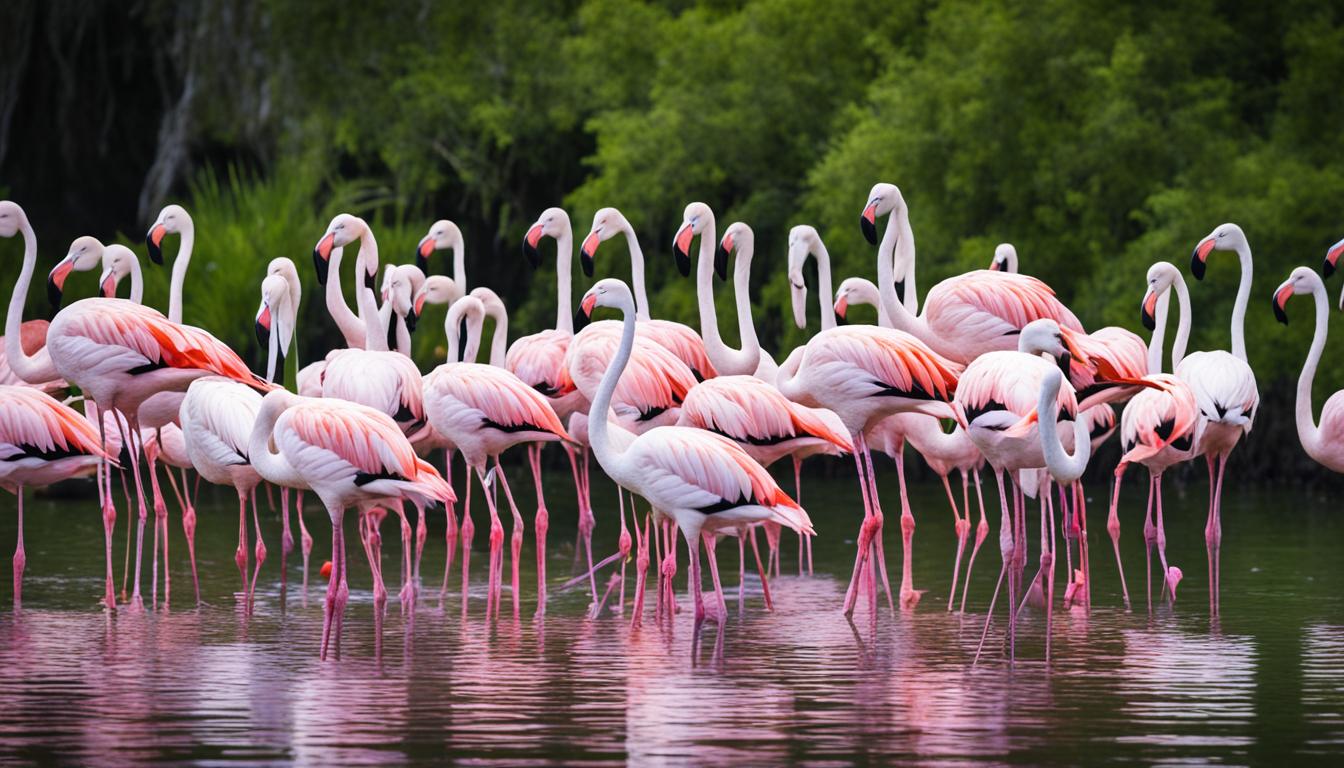- Overwatering can be harmful to Venus flytraps
- Knowing the signs of overwatering is critical to the plant’s health
- Excessive watering can cause yellowing leaves, root rot, and stunted growth
Understanding Venus Flytrap Watering Needs
If you’re a proud owner of a Venus flytrap, you likely know that these unique plants require specific care. One of the most crucial aspects of caring for your Venus flytrap is understanding its watering needs. Overwatering can be a significant issue for these plants, leading to potentially severe consequences if not addressed. To avoid this problem, it’s essential to know the signs of excess watering and how to identify if your Venus flytrap is overwatered.
Venus flytraps require moist soil, but it’s crucial not to overwater them. Overwatering can cause root rot and other maladies that can harm your plant. Signs of overwatering can manifest in several ways, including yellowing or wilting leaves, leaf drop, or stunted growth. Understanding the symptoms of overwatering is essential in maintaining healthy Venus flytraps.
One way to avoid overwatering your Venus flytrap is to monitor soil moisture levels. This plant is sensitive to too much water, so it’s vital to check the soil regularly and provide sufficient drainage. A general rule of thumb is to make sure that the soil is moist but not soaking wet. A Venus flytrap will typically require watering about once every seven to ten days, depending on the humidity and temperature in your home.
Signs of Overwatering Venus Flytraps
Overwatering can cause various symptoms in Venus flytraps. Some common signs of overwatering include:
- Drooping leaves
- Mushy leaves
- Yellowing or browning leaves
- Stunted growth
- Root rot
If you notice any of these symptoms, it’s essential to take immediate action to prevent further damage to your plant. Adjusting your watering schedule and improving drainage can help restore your Venus flytrap to health.
In conclusion, understanding a Venus flytrap’s watering needs is essential in maintaining a healthy plant. Overwatering can cause significant issues, so it’s crucial to keep an eye out for signs of excess watering and take the necessary steps to prevent these problems. With proper care, your Venus flytrap can thrive and continue to fascinate and delight for years to come.
Common Signs of Overwatering in Venus Flytraps
If you notice some strange changes in your Venus flytrap, it may be an indication of overwatering. Excessive watering is one of the most common reasons why Venus flytraps fail to thrive. To avoid harming your plant, you must know the signs of overwatering and take necessary measures to correct it.
Here are some indicators that your Venus flytrap is being overwatered:
| Signs of Overwatering | Description |
|---|---|
| Yellowing Leaves | Yellow leaves are a common sign that your Venus flytrap is being overwatered. As the roots become waterlogged, they cannot absorb nutrients efficiently, which leads to chlorosis or yellowing of the leaves. |
| Mushy Leaves | Overwatering can cause the leaves of your Venus flytrap to become mushy and weak. This occurs because the roots are not getting enough oxygen, which causes them to rot and destroy the entire plant. |
| Root Rot | When the soil is consistently wet, the roots of your Venus flytrap can begin to rot, which is a deadly condition. The roots will turn brown or black, indicating decay or damage. |
| Stunted Growth | Overwatering can also cause your Venus flytrap to stop growing altogether. Excess water can disrupt the plant’s metabolic processes, stunting its growth and causing it to become weak and brittle. |
As you can see, overwatering can be detrimental to the health of your Venus flytrap. Therefore, it is essential to take immediate measures of correcting your watering practice if any signs of overwatering are present.
Conclusion
Now that you know the signs of overwatered Venus flytrap, make sure to be cautious with your watering practices. Always monitor the soil moisture levels and implement proper drainage to prevent overwatering and other related issues. In doing so, your Venus flytrap will be healthier and happier in its unique habitat!
Preventing Overwatering and Protecting Your Venus Flytrap
Now that you are aware of the signs of overwatering in Venus flytraps, it’s important to take preventive measures to protect your plant from harm. Here are some tips to avoid overwatering:
- Monitor soil moisture levels: Regularly check the soil moisture around your Venus flytrap by sticking your finger about an inch into the soil. If the soil feels moist, wait to water the plant.
- Water properly: When watering your Venus flytrap, pour water slowly and evenly over the soil until it starts to come out of the drainage holes. Avoid letting the plant sit in standing water.
- Understand your plant’s needs: Venus flytraps thrive in well-draining soil and require a humid environment. Ensure your pot has proper drainage to prevent water from sitting in the soil.
- Choose the right container: Use a container that is appropriate for the size of your plant, and ensure it has drainage holes to allow water to escape.
- Recognize warning signs: Be aware of the signs of overwatering, such as yellowing leaves or a mushy appearance. If you notice these signs, adjust your watering practices immediately to avoid further damage.
By following these tips, you can help prevent overwatering and protect your Venus flytrap from harm. Remember, a little bit of monitoring and care can go a long way in maintaining a healthy and happy plant.
Rescuing an Overwatered Venus Flytrap
If you notice signs of overwatering in your Venus flytrap, it’s important to take action to rescue the plant before irreversible damage occurs. Here are some steps you can take to help your overwatered Venus flytrap recover:
Adjust Your Watering Frequency
If your Venus flytrap is overwatered, the first thing to do is adjust your watering frequency. Allow the soil to dry out completely before watering the plant again. This may take several days or even weeks, depending on the severity of the overwatering.
When you do water your Venus flytrap, make sure to use distilled water or rainwater. Tap water contains minerals that can be harmful to these plants.
Improve Drainage
If your Venus flytrap is in a container without proper drainage, excess water can accumulate and lead to overwatering. To prevent this, make sure your container has drainage holes on the bottom.
You can also add perlite or sand to the soil mix to improve drainage. This will help excess water drain away from the roots of the plant.
Be Patient
It’s important to be patient when rescuing an overwatered Venus flytrap. The plant may take some time to recover, and it may not be immediately obvious whether it will survive.
While you’re waiting for the plant to recover, avoid fertilizing it or feeding it insects. These actions can add stress to an already weakened plant.
Keep your Venus flytrap in a well-lit area with a temperature between 75-85°F (24-29°C) and high humidity. These conditions will help the plant recover more quickly.
Additional Care Tips
To aid in the revival of your overwatered Venus flytrap, you can provide additional care such as:
- Trimming off any dead or mushy leaves
- Applying a fungicide to the soil to prevent root rot
- Gently rinsing the plant’s leaves with distilled water to remove any excess salt buildup
If your Venus flytrap is showing signs of severe overwatering, such as rotting roots or blackened leaves, it may be too late to save the plant. In this case, it’s best to start fresh with a new Venus flytrap and make sure to provide proper care going forward.
Caring for Your Venus Flytrap: Best Practices
To keep your Venus flytrap healthy, there are several best practices to follow. Proper lighting, temperature, and feeding techniques are essential for maintaining optimal health and preventing overwatering. Here are some tips to ensure your Venus flytrap thrives:
- Providing Adequate Lighting: Venus flytraps require plenty of bright, indirect sunlight to grow and thrive. Place your plant in a sunny window or under artificial grow lights for at least 10-12 hours a day.
- Maintaining Optimal Temperature: Venus flytraps prefer temperatures between 70 to 85 degrees Fahrenheit during the day and between 55 to 65 degrees Fahrenheit at night. Keep your plant away from cold drafts or hot, dry areas.
- Feeding Appropriately: Venus flytraps need nutrient-rich soil to grow healthily. If you’re not growing your plant in its natural habitat, you should feed it insects every 2-4 weeks to give it the necessary nutrients it needs to thrive.
Striking a Balance Between Underwatering and Overwatering
It’s essential to find the right balance between underwatering and overwatering your Venus flytrap. Overwatering can cause your plant to become waterlogged, leading to root rot and other related problems. On the other hand, underwatering can cause your plant to wilt and eventually die.
As a general rule, you should water your Venus flytrap once a week or when the soil feels slightly damp to the touch. It’s better to underwater than overwater, so if in doubt, water less rather than more. Additionally, make sure that you use a well-draining potting mix and a container with adequate drainage holes to allow excess water to escape.
“Finding the right balance between underwatering and overwatering is crucial for keeping your Venus flytrap healthy.”
Conclusion
In conclusion, understanding the signs of overwatering in Venus flytraps is crucial for their well-being. By recognizing the symptoms of excessive watering, you can adjust your watering practices and prevent damage to your plant. Remember to monitor soil moisture levels and provide proper drainage to ensure the soil doesn’t become waterlogged. If you suspect your Venus flytrap is overwatered, take corrective action immediately to prevent further damage. Adjust your watering frequency and provide additional care to aid in its recovery. It’s essential to strike a balance between underwatering and overwatering, as both can be harmful to your plant. By following proper care guidelines, you can maintain a healthy and thriving Venus flytrap in your home. Remember to provide adequate light and temperature conditions, as well as proper feeding techniques. By taking care of your Venus flytrap, you can enjoy the unique and fascinating plant for years to come.Did I Overwater My Venus Flytrap if It’s Turning Black?
If your venus flytrap black appearance has turned black, it may indicate overwatering. Venus flytraps thrive in moist but well-draining soil. Excessive watering can cause the roots to rot, leading to a blackening of the plant. Ensure it is watered adequately and that excess water can drain away to maintain its health.
FAQ
Q: What are the signs of overwatering a Venus Flytrap?
A: The signs of overwatering a Venus Flytrap include drooping or mushy leaves, root rot, stunted growth, and yellowing or wilting leaves.
Q: How can I prevent overwatering my Venus Flytrap?
A: To prevent overwatering, it is important to monitor soil moisture levels, avoid waterlogged conditions by providing proper drainage, and understand the specific watering needs of Venus Flytraps.
Q: What should I do if my Venus Flytrap is overwatered?
A: If your Venus Flytrap is overwatered, adjust your watering frequency, improve drainage, and give the plant time to recover naturally. Be patient and provide additional care to aid in its revival.
Q: What are the best practices for caring for a Venus Flytrap?
A: When caring for a Venus Flytrap, ensure it receives adequate light, appropriate temperatures, and proper feeding techniques. Avoid both underwatering and overwatering, and create the right environmental conditions for the plant.
Q: Why is it important to recognize the signs of overwatering in Venus Flytraps?
A: Recognizing the signs of overwatering is crucial to the health and longevity of Venus Flytraps. Overwatering can cause significant damage to the plant, such as root rot and stunted growth. By being aware of these signs, you can adjust your watering practices and provide proper care to prevent overwatering.











